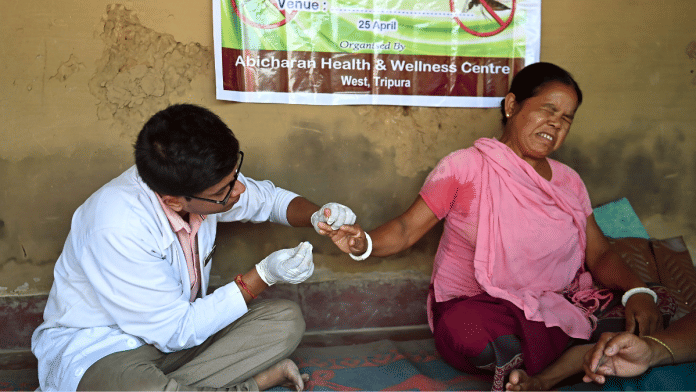New Delhi: Global health spending, which surged during the early stages of the COVID-19 pandemic, declined in 2022 to $9.8 trillion—equivalent to 9.9 percent of the global GDP (Gross Domestic Product)—according to a new report by the World Health Organisation.
The report, titled ‘Global spending on health: Emerging from the pandemic’ and published Monday, highlights this as the first real-term decline in global health spending since 2000.
It also notes changing priorities and economic challenges as the world recovers from the COVID-19 pandemic. In 2021, global spends on health reached $9.8 trillion, accounting for 10.3 percent of the world’s GDP.
By the third year of the pandemic, upper-middle and high-income countries continued to allocate nearly one percentage point more of their government budgets to health, compared to pre-pandemic levels, reflecting sustained emphasis on healthcare.
In 2022, average health spending per person decreased in “real terms”, compared to 2021 across all income groups, except for lower-middle-income countries, the report said.
Government spending on health per person dropped in all income groups. For most, this happened even as overall government spending increased, meaning health received a smaller share of the budget. However, high-income countries maintained health spending priorities close to 2021 levels, even as overall government spending fell.
External health aid rose in low and lower-middle-income countries in 2022, following a big jump in 2021. In low-income countries, aid made up a significant part of health funding—31 percent of total spending, compared to 22 percent from domestic public sources.
Out-of-pocket spending (OOPS) on health per person stayed about the same as 2021 in all income groups, except for lower-middle-income countries, where it went up.
The report also highlights that despite the drop from 2021, per capita health spending in 2022 remained above 2019 levels, aligning with long-term trends observed between 2000 and 2019. Domestic public spending on health was 6–7 percent higher than pre-pandemic levels in most income groups and 11 percent higher in upper-middle-income countries.
High-income and upper-middle-income nations maintained a higher health priority compared to pre-pandemic levels, while low and lower-middle-income countries reverted to their previous spending patterns.
Govt spending on health schemes
During the COVID-19 pandemic, government health programmes responded to the crisis more quickly than other funding systems, the report noted. In 2020, government spending on schemes per capita rose in real terms in 132 of 163 countries, and 93 of those countries saw a growth rate of above 10 percent.
In 2021, government spending on health schemes per person increased in all income groups, except for low-income countries, where it declined but still remained higher than before in real terms.
However, in 2022, as domestic public health spending decreased overall, government scheme spending dropped by 7 percent on average across the countries studied. Of the 162 countries analysed, 107 had lower spending than in 2021, with 75 of them seeing a drop of more than 10 percent.
Despite this, in 116 countries, government spending per capita in 2022 was still higher in real terms compared to 2019, before the pandemic.
The report also warns that sustaining elevated health spending levels may prove challenging amidst economic headwinds, like slowing growth, rising debt servicing costs and competing fiscal priorities. The long-term impact of the COVID-19 pandemic on global health financing remains uncertain, with critical questions about whether governments can maintain the progress achieved during the crisis.
The report highlighted the need for robust policies to navigate these challenges and ensure resilient health systems capable of addressing evolving global health demands.
Also Read: Putting state-run hospitals in private hands is an ongoing experiment. It doesn’t always pan out






